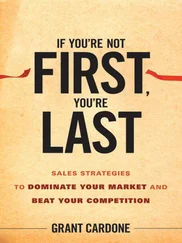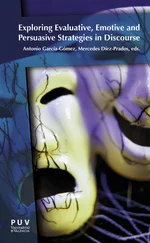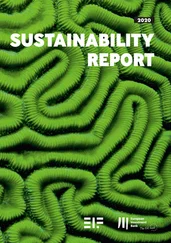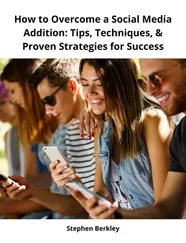As Interface approached the management of their manufacturing operations through a sustainability lens, they were able to identify numerous opportunities to not only conserve resources, but also cut costs.
Some savings have been the result of making fundamental shifts in how Interface manufactures its flooring products. For instance, engineers at Interface's Bentley Prince Street factory in California reconsidered the way they made carpet that resulted in a reduction of the water used to manufacture each unit by 47%. The company simply moved away from the chemical-intensive dye-injection and yarn dye methods for adding colors and patterns to their products. Dye-injection involved using a large machine, much like a big ink-jet printer, to apply colors to long lengths of carpet. The yarn-dye method involved soaking fibers in dye solution before tufting it into carpet. In pursuit of their sustainability objectives, Interface Bentley Prince Street totally phased out the use of dye-injection carpet printing in 1999 and reduced carpet made with the yarn-dye process from 45% of its output in 2001 to 1% in 2009.
As a substitute, the company shifted its focus to two alternative processes—piece dyeing and solution dyed yarns. The piece dyeing process involves manufacturing a blank slate of white carpet, and then adding patterns and colors on a made-to-order basis. This process of customization is far more energy and resource efficient than the sweeping dye-injection method.
The company also reconsidered the process of creating the carpet yarn itself. Instead of soaking fibers in dyes, the switch was made to the use of yarn filaments that are extruded from solutions already impregnated with pigment. This dyeing method drastically reduces the amount of water, energy, and chemicals required in the process and at InterfaceFLOR's modular carpet factory in Georgia. This change in the manufacturing process resulted in a savings of over 88% in water per unit of production.
Interface has also taken advantage of the low hanging fruit available to them by making easy changes in building operations. At InterfaceFLOR in Thailand, they have reduced total water usage by 30% through the installation of water efficient toilets, showers, and sinks. Outside, they selected plants for their landscape plan that only required one year of temporary irrigation.
Interface's significant reduction in water use is just one example of how managing the environmental impacts of business can bring about meaningful change. By relentlessly pursuing sustainability focused innovation, Interface is racing to fulfill its long-term vision of becoming a “restorative company” and is continuing to set the pace as a world leader in next generation manufacturing.
VinylPlus—The European PVC Industry's Voluntary Commitment to Sustainable Development
In 2000, together with the Environment Agency in the United Kingdom, TNS published a report on the challenges the polyvinyl chloride (PVC) industry must address to align its activities with the four system conditions for sustainability [10]. The report highlighted five key sustainability challenges and followed an extensive study of PVC including consensus-building workshops with industry, NGOs, retailers, and regulators. Over the years these challenges have provided a reference point for the industry, initially in the United Kingdom and subsequently across Europe. The most proactive organizations in the sector have been working to address them.
On June 22, 2011, the European PVC industry launched VinylPlus—a new voluntary commitment to enhance the sustainable production and use of PVC by 2020. It is no secret that PVC is a controversial material that has both critics and supporters, so when an entire industry consortium mobilizes around a voluntary commitment such as this, it is surely a positive sign that sustainable development is being taken seriously in the board rooms of major corporations.
On top of this, the VinylPlus initiative represents an expanded scope and level of ambition over prior efforts. Targets are derived from TNS System Conditions for sustainability and build on previous work in the sector.
Over the last eight years, through a series of activities, TNS has worked with the board of the initiative to review and map out the challenges for PVC, offer capacity building workshops, gather stakeholder views and provide recommendations on the formulation of the new industry charter.
They used the ABCD planning process to help industry leaders apply the framework and arrive at the priorities. They did this by first beginning with a vision of where the industry wants to head, identifying challenges that must be overcome, generating ideas on what needs to be done, and finally arriving at priorities and targets for the period to 2020.
Before deciding on the priorities and actions to be undertaken, they contacted 113 stakeholders across Europe on behalf of the board of Vinyl2010 with a briefing on the challenges they had identified together with industry representatives. Information from these stakeholders were used in the formulation of exact goals and targets.
They were pleased to see an increased level of ambition in VinylPlus and believe it sets out a clear roadmap for the industry. Proof will nevertheless be in the action, and it will be judged by whether targets are met and stakeholders feel their views are being heard.
Moving forward TNS's role will be to follow the new initiative in the following capacity:
1 Critical friend—Challenging and advising the industry to make progress while ensuring the initiative retains the direct link to TNS system conditions for sustainability.
2 Stakeholder intermediary—Encouraging constant external monitoring and communication with external stakeholders
3 Capacity builder—Supporting industry to integrate sustainability principles into their operations in order to achieve the goals set out in the initiative
By any measure, Dow is a sustainability leader.
Dow has been listed in the Dow Jones Sustainability Index nine times. They have won “green” awards from Michigan to China for their wide array of products from insecticides to solar panels. And in 2006, CEO Andrew Liveris enthusiastically announced seven new sustainability goals for 2015 even after the company had already met or exceeded many of its 1996 sustainability goals. In that initial 10 years span, they saved more than US$5 billion in bottom-line costs.
Yet probably their most impressive feat to date might be their array of clear and simple bar graphs that dot the end of each of their quarterly sustainability reports. These simple beige and green charts aren't flashy—they probably were produced right in an Excel spreadsheet. But it is the function of these graphs that make them so meaningful and compelling, based on what they represent.
First, whether one particular graph is showing their product safety leadership or the intensity of greenhouse gas emissions, you can immediately see the upward or downward trajectory of the company. Their goals are always marked with a simple black line, and for the most part, the green and orange bars show that they are hitting their intended targets. Dow's progress is clear .
Second, Dow may have some of the most complete, public, and long-range sustainability data available. It is immediately evident that the company keeps great records of the data that they produce. This meticulous study certainly seems central to the corporate culture, with good reason—Dow is driven by the exacting art and science of chemistry, which demands precision from heaps of data. Dow's progress is credible .
The data are so complete that their sustainability managers are able to make sense of specific anomalies when they occur. For instance, in 2009, the company's intensity of greenhouse gas emissions (the amount of energy used to create a single pound of finished product) increased 5%, which went in the opposite direction after four years of downward progress. They were able to attribute this slide to lower operating efficiencies of their production facilities during the worldwide recession. In short, they could see exactly what the effect underutilizing their facilities had on their overall emissions levels—a fantastic feat for any company as large as Dow. Dow's progress can be meticulously tracked .
Читать дальше












